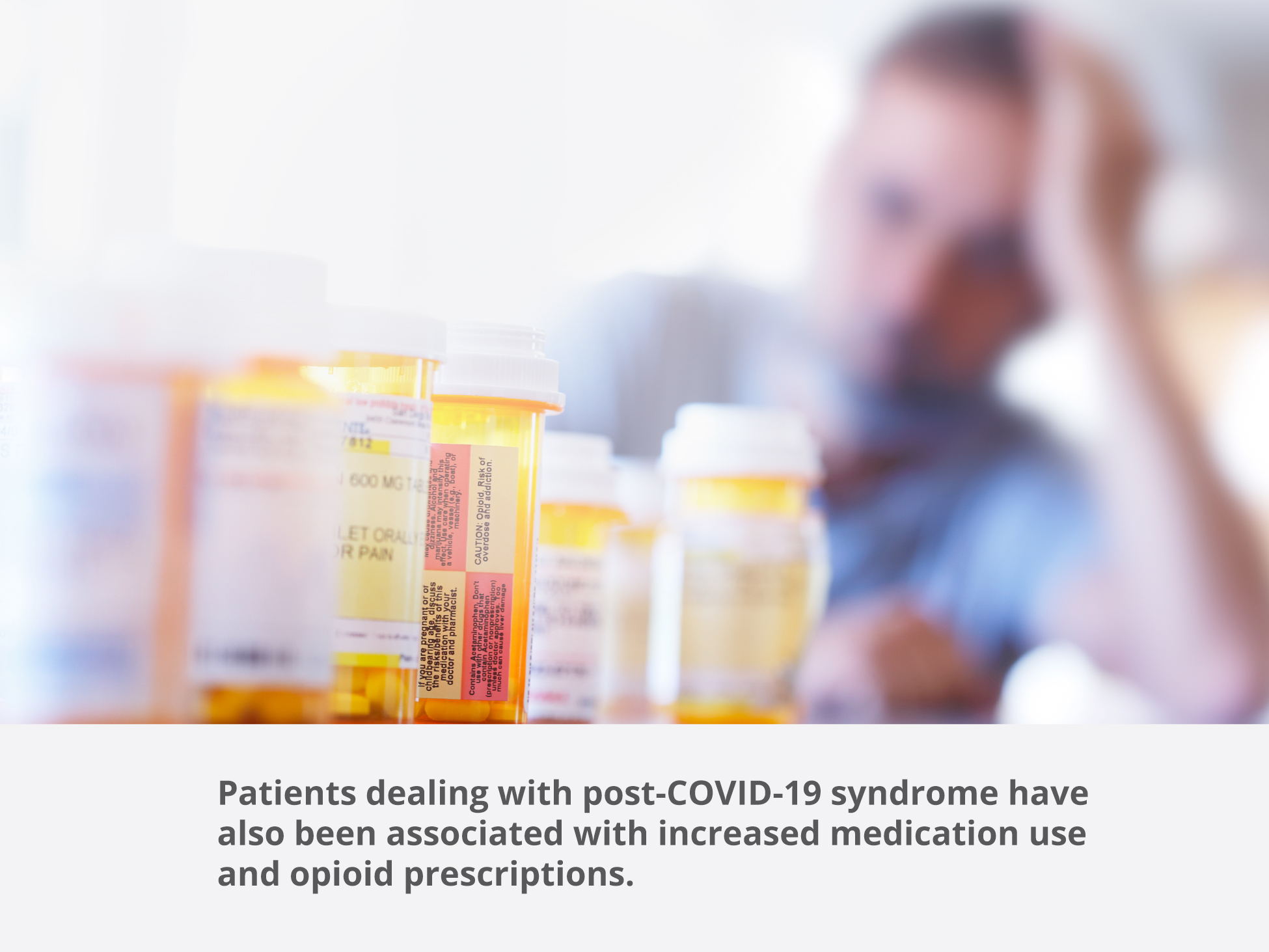Phil Walls, RPh
Chief Clinical Officer
One result of the pandemic that surprised many in workers' compensation last year was the limited impact of COVID-19 treatment on retail pharmacy spend. In compensable cases of severe COVID infection, drug therapy was typically administered in a hospital setting. Less severe cases often did not require extensive prescription medications.
As we reported in the 2020 myMatrixx Drug Trend Report, prescription medications used to treat COVID symptoms and dispensed through retail pharmacies represented less than 1% of all prescriptions processed by myMatrixx last year. With specific treatments including inhalers and cough suppressants, they tended to not be costly. However, there is growing reason to believe that this pattern of low utilization and cost may not continue in 2021.
Costs for long-term COVID care may rise in the coming years
A number of early indicators are pointing to a potential rise in prescription drug costs for compensable COVID cases, even as infection rates begin to fall dramatically with growing levels of vaccination and immunity. This is because we’re just beginning to understand the long-term damage that the disease is causing for a significant portion of patients. What has been labeled Post-COVID syndrome, also known as “long COVID,” has implications for workers’ comp pharmacy due to a much higher likelihood of requiring extensive and often costly retail drug therapies.
For example, Ofev® (nintedanib), a drug used to treat pulmonary fibrosis, is currently being used off-label to treat a specific form of post-COVID lung fibrosis. Because it has not yet been authorized as a COVID therapy, the cost of this treatment is currently more than $10,000 per month.
This and other treatments for an increasing list of post-COVID symptoms and complications have a potential to contribute to high long-term costs for cases covered under COVID presumption laws. The myMatrixx clinical pharmacy team believes it’s extremely important for the industry to understand post-COVID syndrome and why it deserves ongoing attention.
A growing constellation of symptoms and comorbidities
COVID-19 is far from the first viral disease to contribute to chronic symptoms that persist long after an initial infection. Post-viral complications have been observed in diseases ranging from chickenpox to Zika to Ebola, often causing similar symptoms such as chronic fatigue, shortness of breath and brain fog. Post-COVID-19 syndrome is likely receiving increased attention however due to the unprecedented nature of the 2020 pandemic and the fact that medical researchers are starting to understand this phenomenon and take it seriously. This includes efforts to develop a registry of cases and symptoms to help patients and physicians make informed care decisions.
It deserves particular attention in workers’ compensation because COVID-19 is unique in being an infectious disease that may be deemed compensable under presumption laws. And according to one recent study, approximately 10% of patients report prolonged symptoms. Commonly reported post-COVID symptoms include:
- Fatigue and shortness of breath
- Loss of sense of smell or taste
- Memory or concentration problems, also known as “brain fog”
- Headaches
- Dizziness
- Heart palpitations
For some patients, doctors are also finding that the ongoing effects of the virus can have an extensive negative impact on a wide range of organs and systems in the body. The biggest two are pulmonary and cardiac issues. In addition to the post-COVID pulmonary fibrosis mentioned above, there is also evidence of extensive cardiac damage in a portion of infected patients that can elevate the risk of complications such as ongoing inflammation, arrhythmias and even heart failure.
However, the list of so-called multi-organ effects is seemingly growing by the week. Other disorders that are being found to be impacted by long COVID include:
- Eye disorders such as conjunctivitis
- Dysautonomia, a relatively rare condition which is often accompanied with postural orthostatic tachycardia syndrome (POTS)
- Diabetes
- Autoimmune diseases
As more COVID-related aftereffects and complications are identified, the effect this can have on compensable cases covered under certain state presumption laws will also continue to grow.
Long-term COVID-19 patients have increased drug treatment needs — and elevated risk for misuse
In addition to these health concerns, patients dealing with post-COVID-19 syndrome have also been associated with increased medication use. Along with targeted drug therapy for these symptoms and complications, another result is increased opioid prescriptions for these patients. This fact, along with pandemic-related disruption of access to treatment for opioid-use disorder is cause to continue close monitoring of opioid utilization in 2021 as well.
For clients with compensable COVID claims, the myMatrixx Clinical Pharmacy Department is already helping identify patients who may be at risk of post-COVID-19 syndrome. We have also developed and continue to update formularies designed to help with appropriate prescriber drug selection and facilitate authorization by the claims professional.




